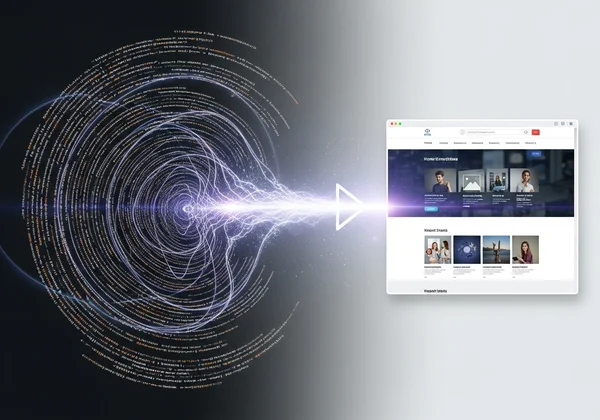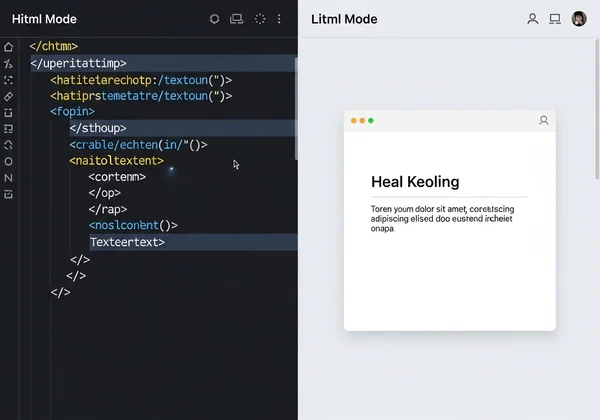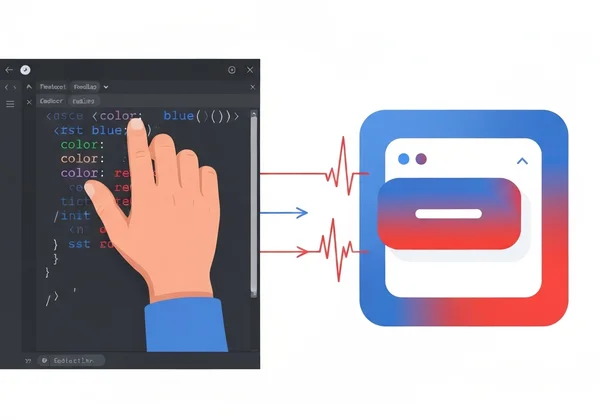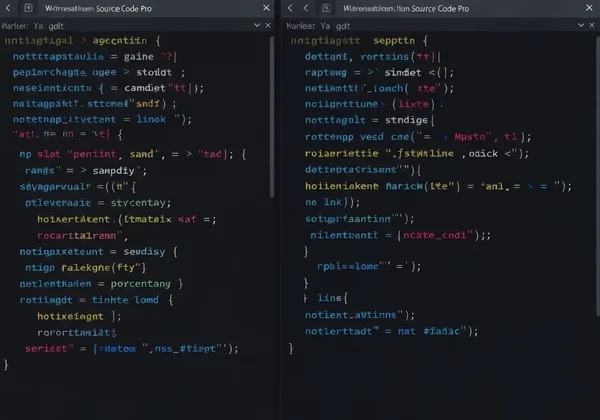HTML Prototyping Online: Instant Web Ideas with HTML Viewer
Ever feel like your great web ideas get stuck in a swamp of complex setups and endless deployment cycles? For developers, designers, and learners, the friction of spinning up a local server just to test a small snippet can stifle creativity and disrupt efficient web development workflows. But how to preview an html page? Discover how our HTML Viewer offers a seamless, instant solution for HTML prototyping, turning your concepts into visible reality without any local environment hassle. This powerful online html editor provides a sandbox where your ideas can come to life in seconds.

Build Online HTML Mockups Quickly
In the fast-paced world of web development, speed is a competitive advantage. The ability to create an online html mockup allows you to visualize layouts, test components, and validate design choices before committing to a full-scale build, aligning with best practices for UI/UX prototyping. An effective prototyping process saves time, reduces rework, and fosters better collaboration between team members. It’s the bridge between a raw idea and a functional product, and having the right tool is essential.
Why Rapid Web Prototyping Matters for Developers
For developers like Alex, the pragmatic engineer, efficiency is key. Rapid web prototyping eliminates the need for cumbersome Integrated Development Environments (IDEs) for simple tasks. Instead of creating new project files and configuring a local server, you can jump straight into coding. This agile approach is perfect for isolating bugs, experimenting with new CSS properties, or building proof-of-concept components.
Moreover, rapid prototyping facilitates clearer communication. When a designer like Maria wants to see a minor visual tweak, providing a live, interactive mockup is far more effective than sending static images back and forth. This iterative process ensures that the final product aligns perfectly with the initial vision, catching potential issues early in the design cycle. For beginners like Ben, it offers an invaluable hands-on learning experience, connecting code directly to visual outcomes and reinforcing foundational concepts from resources like the MDN Web Docs for HTML.
Getting Started with Your HTML Viewer & Editor
Getting started with prototyping on our platform is incredibly straightforward, designed for zero friction. You don’t need an account or any complex setup. The interface presents a clean, split-screen view: a code editor on one side and a live preview pane on the other. This setup is the core of our powerful HTML Viewer & Editor.

Here’s the simple workflow:
- Input Your Code: You can either type your HTML directly into the editor, paste a code snippet you're working on, or even upload an existing .html file.
- See it Live: The moment you input code, it renders instantly in the preview pane. There's no "Run" button to click or page to refresh. This immediate feedback is what makes our tool so efficient.
- Edit and Refine: Adjust your HTML tags, modify attributes, or correct mistakes. Every change you make is reflected in real-time, allowing for rapid iteration and debugging.
This simple, three-step process is all it takes to start building. You can go from a blank slate to a structured web mockup in minutes using our free online tool.
Adding Styles & Interactivity (CSS/JS)
A prototype is more than just raw HTML structure. To truly test a design, you need to add styling with CSS and basic interactivity with JavaScript. Our online editor fully supports this, allowing you to create comprehensive and dynamic mockups. You can embed CSS directly within <style> tags in the <head> of your document or add inline styles to individual elements.
For instance, you can quickly test different color palettes, font sizes, or Flexbox/Grid layouts to see how your components respond. Similarly, you can add JavaScript inside <script> tags to test simple user interactions, like button clicks or form validations. This capability transforms the tool from a simple viewer into a complete front-end sandbox, perfect for fleshing out ideas before they move into a full development environment.
Instant HTML Preview: See Changes Live
What truly sets rapid prototyping apart? It's the immediate satisfaction of watching your code come alive as you type. An instant html preview closes the gap between writing code and understanding its impact. This real-time visualization removes guesswork and accelerates the entire development and design process, embodying the "what you see is what you get" principle.
The Feedback Loop: Code to Visuals in Real-time
Traditional development workflows often involve a tedious cycle: write code, save the file, switch to the browser, and refresh the page. This repetitive process, though small, creates significant cognitive overhead and slows down momentum. Our tool eliminates this friction entirely by establishing a real-time feedback loop.

As you type <h1>Hello, World!</h1>, the text appears instantly in the preview pane, styled as a top-level heading. Change a CSS color value from blue to red, and the element’s color updates immediately. This direct, one-to-one connection between code and visual output is crucial for debugging layout issues, fine-tuning styles, and learning how different HTML elements interact. It’s an intuitive and powerful way to work.
Refining Designs with Real-time Editing
For web designers who code, this tool is a game-changer. Imagine you're trying to perfect the padding on a button or adjust the alignment of a navigation bar. With real-time editing, you can incrementally change CSS values and watch the design evolve live. It's like sculpting your design in real-time—a far more creative and fluid process than traditional coding.
This feature also enhances collaboration. A designer and developer can work together in real-time, making adjustments on the fly and agreeing on the final look and feel instantly. This eliminates long email chains and misunderstandings, ensuring everyone is on the same page. You can view your HTML online and make precise adjustments with confidence.
Sharing Your Web Prototypes Effortlessly
Once your prototype is ready, sharing it is simple. While the platform doesn't host your code, it allows you to perfect it and then download the final result as a clean .html file. This file contains all your HTML, embedded CSS, and JavaScript.
You can then email this file to a client, upload it to a shared drive for team review, or use it as a starting point for a larger project. This makes it easy to get feedback from stakeholders who may not have access to development tools. A self-contained HTML file is a universal format that can be opened in any web browser, making your prototype accessible to everyone.
Enhancing Your Prototypes with Advanced Tools
Beyond its core editor and preview functions, our HTML viewer includes powerful utilities that streamline your workflow and promote best practices. These tools help you manage your code effectively, find inspiration, and ensure your prototypes are clean and optimized from the start.
Code Beautification and Minification Benefits
Clean code is readable, maintainable, and easier to debug. The built-in HTML beautifier automatically formats your code with proper indentation and line breaks, transforming a messy block of HTML into a well-structured document, a practice often highlighted in Clean Code principles. This is especially useful when working with code pasted from other sources or when collaborating with others. A clean structure helps you and your team understand the document's hierarchy at a glance.

Conversely, the HTML minifier prepares your code for performance. It strips out all unnecessary characters, such as spaces, comments, and line breaks, reducing the file size. While this is critical for production websites to improve load times, it's also a great habit to practice during development. Using our HTML formatter ensures your code is always in its best shape, whether for readability or optimization.
Using URL Import for Inspiration & Analysis
One of the most unique features is the ability to import the source code of any live website directly from its URL. This is an incredibly powerful tool for learning and analysis. For a student like Ben, it's a window into how real-world websites are built. He can pull in a complex site, use the beautify tool to make the code readable, and dissect its structure element by element.
For professionals, this feature is invaluable for competitive analysis or debugging. A developer can pull in a live page to inspect its HTML structure without digging through browser developer tools. An SEO specialist like Sarah can use it to quickly analyze a competitor's meta tags, heading structure, or schema markup in a clean, formatted view. It turns the entire web into your personal library of examples.
Start Prototyping & Visualizing with Our Online HTML Editor Today!
From quick mockups to in-depth analysis, the right tool can transform your workflow. This online HTML tool provides a free, fast, and feature-rich environment for all your HTML prototyping needs. It empowers developers to debug with speed, designers to visualize with clarity, and learners to explore with curiosity. Stop wasting time with complex setups and start bringing your ideas to life instantly.
Ready to accelerate your web development process? Try our free tool today and experience the power of instant, real-time HTML editing and viewing.
Common Questions About Online HTML Viewers & Prototyping
How do I preview an HTML page online instantly?
You can easily preview an HTML page online by using a tool like our online HTML viewer. Simply paste your HTML code into the editor, and a live preview will automatically render in an adjacent panel. This allows you to see changes in real-time as you edit the code.
Can I paste HTML into a browser and see it rendered?
Pasting HTML directly into the browser's address bar will not render it as a webpage. However, you can use an online tool like an online HTML viewer to paste your code into a text field, and the tool will render it for you in a sandboxed environment, showing you exactly how it would look in a browser.
What exactly is an HTML viewer used for in web development?
An HTML viewer is a tool used to render HTML code into a visual webpage. In web development, it's used for quickly testing code snippets, debugging layout issues, creating rapid prototypes, learning HTML structure by seeing code and output side-by-side, and formatting code for better readability.
Is this a free tool for HTML prototyping?
Yes, our online HTML viewer is a completely free tool. It provides a full suite of features for HTML prototyping, including a live editor, real-time preview, code beautifier, code minifier, and URL import functionality, all without any cost or need for registration.